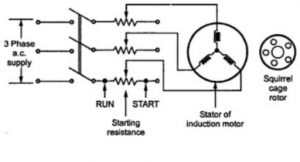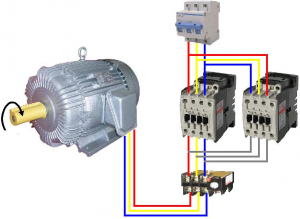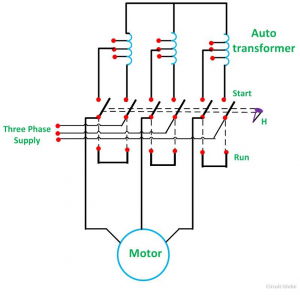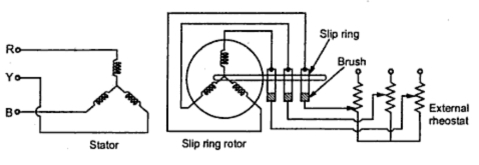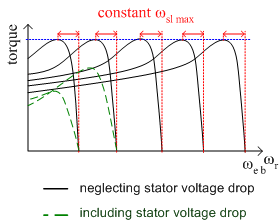Types of starters
Various types of starters are as follows:
- Stator resistance starter.
- Star delta starter.
- Autotransformer starting.
- Rotor resistance starters.
- Variable stator frequency starting.
Stator resistance starter
A starter resistance is connected in each line series with each phase winding of the stator.
Initially all the starter resistances are kept in the “Start” position so that they offer their maximum resistance.
The switch is turned on to connect the three phase ac supply to the stator winding.
As the motor accelerates, the starter resistance is reduced by the moving the variable contact of the resistance towards the “Run” position.
Star delta starter
The stator winding of the motor is connected in delta configuration at the time of starting.
When the motor accelerates, stator is connected in delta configuration to apply the rated voltage to the windings.
The starting torque is reduced as the torque is proportional to square of stator voltage and there is a jerk while switching from star to delta.
Autotransformer starting
An autotransformer is used to apply a low voltage to the stator winding at the time of starting. When the motor speed reached the desired level, autotransformer is disconnected and motor is connected directly across the supply. Operated by a two position switch i.e. manually / automatically using a timer to change over from start to run position.
In starting position supply is connected to stator windings through an auto-transformer which reduces applied voltage to 50, 60, and 70% of normal value depending on tapping used. Starters used in lager industries, it is larger in size and expensive.
Rotor resistance starter
This type of control is used in the slipring induction motors. An external variable resistance is connected in the rotor circuit.At the time of starting this variable this resistance is set to the highest possible value ,to the motor current at starting.
The three moving contacts are interconnected to form a start point for the resistors.
To ensure that the motor cannot be started until all rotor resistance is in circuit, an interlock is fitted which prevents the contactors from being closed until this condition is fulfilled.
Variable frequency starting
Instead of controlling only the stator voltage at the time of starting, the stator frequency should also kept low at the time of starting the motor.
